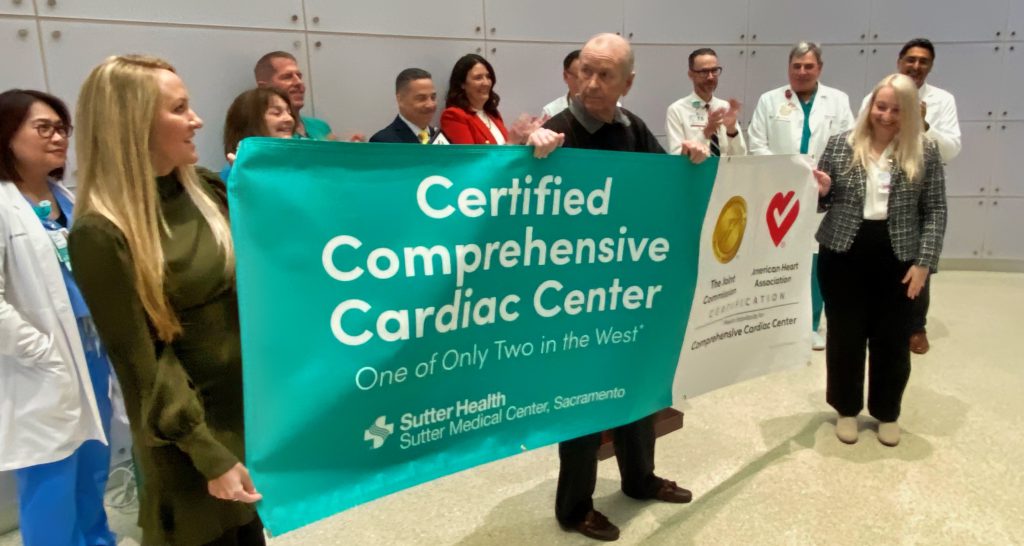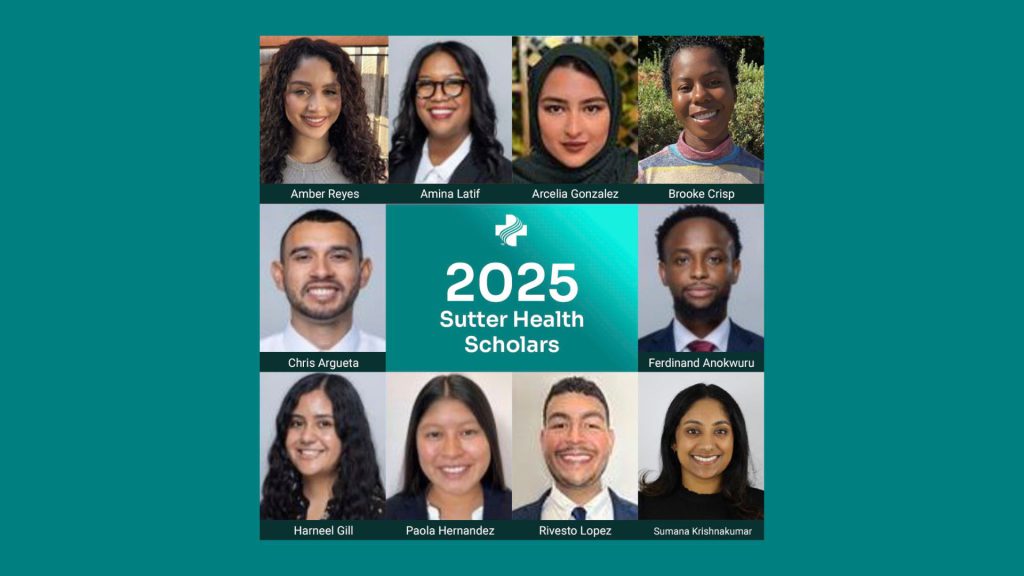By Karin Fleming with Monique Binkley Smith, Vitals Contributors
After Pamela Swint was diagnosed with multiple sclerosis in 2019, she looked for treatments to help slow the progression of her illness. Discovering few options existed, she asked her doctor at Sutter’s Palo Alto Medical Foundation about joining a clinical trial to help uncover clues about optimal treatment. She qualified to join a study testing how a new drug in pill form compares with an intravenous medication already used by patients with her form of MS.
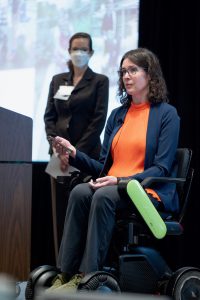
Patient Pamela Swint spoke at the Sutter Research Symposium
Nearly five years later, a grateful Swint shared her story and thanked Sutter Health researchers at the not-for-profit health system’s first-ever research symposium in August.
“I’m happy to be able to ‘pay it forward’ in this way and bring new hope for a better quality of life for people who are living with MS,” Swint told the gathered researchers.
Read more about the study in which Pamela Swint is participating here.
At the research symposium in Walnut Creek, Calif., Sutter researchers shared how innovation and discovery is accelerating across the health system, helping bring better care to more patients when and where they need it.
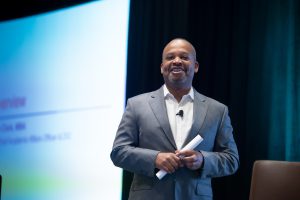
Leon Clark is Sutter Health’s chief academic affairs officer
“Patients are the ‘true north’ of research at Sutter and providing them the best care possible is at the heart of our mission as a healthcare organization,” says Leon Clark, Sutter’s chief academic affairs officer and designated institutional official. “From bench to bedside and beyond, research and clinical trials at Sutter are uncovering the clues and the keys to improve treatments and tools for early diagnoses of complex illnesses, and to help find cures.”
Helping Older Adults Live Independently, Longer and Healthier
Dr. Steve Cummings, director of Sutter’s San Francisco Coordinating Center and its Sequoia Center for the Science of Aging continues his work to curb the incidence of age-related illness by pursing longevity research.
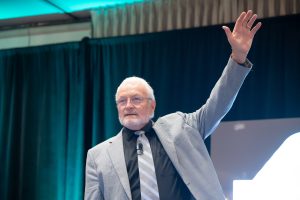
Dr. Steve Cummings is director of Sutter’s San Francisco Coordinating Center and the Sequoia Center for the Science of Aging
“Aging is a strong risk factor for chronic diseases such as cancer, stroke, type 2 diabetes and heart disease,” says Dr. Cummings.
One of his studies is SOMMA (the Study of Muscle Mobility and Aging), the first study to examine human cells to discover what biological changes lead to loss of muscle mass and physical disability.
“We hope this large study will uncover ways to help older adults maintain physical independence as they age,” says Dr. Cummings.
As the study continues, what can older adults do to preserve physical strength? Dr. Cummings says the best strategies include regular physical activity, modest weight-bearing or resistance training and ensuring adequate daily intake of protein.
Advancing Equity in Clinical Research
Clinical trials are the foundation of novel drug and device discoveries, but they also have a complicated history of racial, social and economic inequities. Kristen M.J. Azar, scientific director of Sutter Health’s Institute of Advancing Health Equity, described at the symposium how Sutter researchers are working to achieve greater equity in clinical research.
Azar summarized findings published in the Journal of Clinical Pathways she co-authored that help establish a “blueprint” of four critical strategies for enhancing clinical trial equity:
Increasing access to clinical trials: by conducting research that reflects a community’s needs and barriers that may have traditionally limited participation in research.
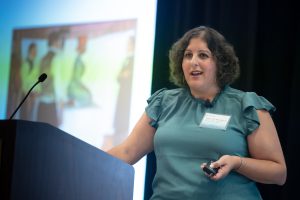
Kristen M.J. Azar is scientific director of Sutter’s Institute of Advancing Health Equity
Building trust and fostering relationships: by engaging people and communities typically under-represented in research or historically marginalized, so they are more likely to value, participate in and help design and plan clinical trials.
Creating and Tracking Metrics to Promote Equitable Inclusion
Implementing health policies that increase equitable access to investigational treatments after they are brought to the marketplace.
Azar also highlighted the crucial need to develop a racially and ethnically diverse group of researchers and their staff who conduct clinical trials.
“To achieve equity in health outcomes, we must also achieve equity in clinical research,” says Azar. “It is our collective responsibility to ensure communities most likely to significantly benefit from novel treatments and therapies, given existing health disparities, are not left behind.”
Supporting People with Cancer So They Live Longer and Well
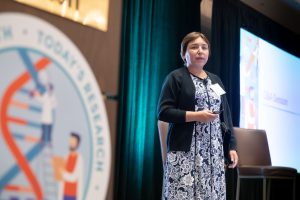
Dr. Deepti Behl is medical director of the Sutter Institute for Medical Research in Sacramento
Dr. Deepti Behl, medical director of the Sutter Institute for Medical Research in Sacramento and a current fellow of the Andrew Weil University of Arizona Center for Integrative Medicine, oversees the integrative oncology program at Sutter Medical Center, Sacramento. Integrative oncology, a relatively new and evidence-based field of medicine, may help people with cancer during and after their cancer treatments.
Dr. Behl is leading a clinical trial at Sutter testing the medicinal herb Ashwagandha for the treatment of “chemo brain” which some describe as mental cloudiness before, during and after chemotherapy treatment.
“Traditional approaches to cancer care may significantly benefit from the addition of complementary strategies including lifestyle modification, acupuncture, mind-body practices like meditation, safe and appropriate use of cannabis and some herbs and supplements,” says Dr. Behl. “These practices may complement (never replace) patients’ traditional oncology care, and support patients through and beyond treatments.”
A Smarter Approach to Stroke Care
Every second counts in detecting and treating stroke, the leading cause of serious, long-term disability in the U.S. Fortunately, clot-busting drugs called thrombolytics significantly help break up clots and prevent new ones from forming.
But Dr. Nobl Barazangi, medical director of stroke and neurocritical care research for Sutter Bay Region, says usage rates of these drugs in hospitals and emergency departments across the U.S. are typically low because, “the exclusion criteria for these drugs may substantially limit their use in the time window when thrombolysis can be most effective.”
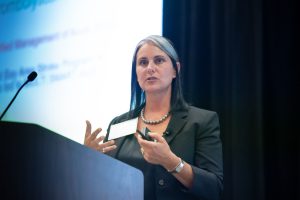
Dr. Nobl Barazangi is medical director of stroke and neurocritical care research for Sutter Bay Region
Now, preliminary data from pioneering studies led by Dr. Barazangi and colleagues at Sutter’s California Pacific Medical Center (CPMC) in San Francisco show using simplified acute stroke treatment criteria may greatly expand the group of patients who are eligible for treatment with clot-busting drugs –thereby giving patients a much greater chance of survival and reducing their risk for lifelong disability.
At the research symposium, Dr. Barazangi described how she and her colleagues took their research a big step further by assessing use of simplified stroke management criteria on a large scale. Their study, one of the largest and first of its kind, evaluated the safety and effectiveness of using simplified management of stroke criteria (SMART) across CPMC’s telestroke network of more than 20 sites.
Another study performed at CPMC and Sutter’s Mills-Peninsula Medical Center in Burlingame, Calif. showed it may be safe to provide thrombolysis to patients taking blood thinners or those with low levels of platelets in their blood. One of the first of its kind, the study helped broaden access to clot-busting therapy for patients likely to benefit from the treatment.
“Results showed use of SMART criteria by stroke specialists may likely increase patients’ access to more equitable stroke care in all hospitals and emergency departments, as well as remotely via telehealth—even if the patient doesn’t receive thrombolytic treatment at a large stroke center,” says Dr. Barazangi.
Research and Innovation: Part of Sutter’s DNA
Research and clinical trials have catalyzed care breakthroughs at Sutter for more than 100 years.
Physicians from Sutter’s Palo Alto Medical Foundation were the first to use lasers in eye disease and skin treatment. Clinicians at Sutter’s CPMC created the first heart-lung machine and tested a targeted cancer drug that became a game-changing approach to treat and even cure some types of cancer. And Sutter General Hospital, which is now Sutter Medical Center, Sacramento, was the site of the first robot-assisted hip replacement surgery in a human patient.
Explore more research at Sutter Health and find out if a clinical trial could be right for you. Visit sutterhealth.org/research


